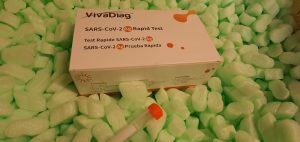Nucleotide-binding area and leucine-rich repeat-containing (NLR) proteins perform as sensors that understand pathogen molecules and activate immunity. In vegetation, the buildup and activation of NLRs is regulated by SUPPRESSOR OF G2 ALLELE OF skp1 (SGT1). In this work, we discovered that an effector protein named RipAC, secreted by the plant pathogen Ralstonia solanacearum, associates with SGT1 to suppress NLR-mediated SGT1-dependent immune responses, together with these triggered by one other R. solanacearum effector, RipE1. RipAC doesn’t have an effect on the buildup of SGT1 or NLRs, or their interplay. However, RipAC inhibits the interplay between SGT1 and MAP kinases, and the phosphorylation of a MAPK goal motif within the C-terminal area of SGT1.
Such phosphorylation is enhanced upon activation of immune signaling and contributes to the activation of immune responses mediated by the NLR RPS2. Additionally, SGT1 phosphorylation contributes to resistance in opposition to R. solanacearum. Our outcomes shed gentle onto the mechanism of activation of NLR-mediated immunity, and counsel a optimistic suggestions loop between MAPK activation and SGT1-dependent NLR activation. Clathrin-mediated and caveolar endocytic pathways signify the key routes by way of which G protein-coupled receptors (GPCRs) could possibly be internalized.
GPCR kinase 2 (GRK2) and β-arrestins are consultant proteins that mediate the GPCR endocytosis. However, the molecular mechanisms by way of which GRK2 and β-arrestin mediate clathrin-mediated and caveolar endocytosis stay unclear. In this research, we decided the mobile parts and processes that mediate the selective interplay between clathrin/caveolin1 and GRK2/β-arrestins. For this we utilized the next: (i) mutant dopamine D2 receptor and β2 adrenoceptor during which the potential GRK2 phosphorylation websites have been altered and (ii) cells during which clathrin, caveolin1, β-arrestins, or Mdm2 expression have been knocked down.
Overexpression of FcγRIIB regulates downstream protein phosphorylation and suppresses B cell activation to ameliorate systemic lupus erythematosus
The current research aimed to look at the consequences of FcγRIIB on systemic lupus erythematosus (SLE) and to examine the underlying mechanisms. For this function, lentiviral vector carrying the membrane‑certain sort FcγRIIB gene (mFcγRIIB lentivirus) and soluble FcγRIIB (sFcγRIIB) protein have been used to deal with B cells from sufferers with SLE. The B cells have been handled with calf thymus DNA (ctDNA) and anti‑calf thymus DNA‑immune complexes (anti‑ctDNA‑IC). mFcγRIIB lentivirus and sFcγRIIB protein have been additionally injected into MRL/lpr SLE mice.
The outcomes revealed that anti‑ctDNA‑IC therapy considerably downregulated the IgG antibody secretion of B cells handled with mFcγRIIB lentivirus. mFcγRIIB and sFcγRIIB decreased the phosphorylation stage of Bruton’s tyrosine kinase (BTK) in B cells, and elevated the phosphorylation stage of Lyn proto‑oncogene (Lyn), docking protein 1 (DOK1) and inositol polyphosphate‑5‑phosphatase D (SHIP). mFcγRIIB promoted the apoptosis of B cells. Following the therapy of MRL/lpr SLE mice with mFcγRIIB lentivirus, the degrees of urinary protein, serum anti‑nuclear and anti‑dsDNA antibodies have been decreased, whereas the degrees of mFcγRIIB in B cells have been elevated. mFcγRIIB ameliorated the pathologies of the kidneys, liver and lymph node tissues of the MRL/lpr SLE mice.
Following therapy of the MRL/lpr SLE mice with sFcγRIIB, the degrees of urinary protein, serum anti‑dsDNA antibody and BTK and SHIP phosphorylation ranges in B cells have been decreased, whereas the serum sFcγRIIB and sFcγRIIB‑IgG ranges have been elevated. On the entire, the findings of the current research show that recombinant FcγRIIB inhibits the secretion of IgG antibody by B cells from sufferers with SLE, ameliorates the signs of SLE in mice, and alters the phosphorylation ranges of downstream proteins of the FcγRIIB signaling pathway in B cells. These outcomes counsel that FcγRIIB might play preventive and therapeutic roles in SLE by inhibiting B cell activation by way of the FcγRIIB signaling pathway, which offers a novel principle and technique for the prevention and therapy of SLE.

Explicit illustration of protein exercise states considerably improves causal discovery of protein phosphorylation networks
Protein phosphorylation networks play an essential position in cell signaling. In these networks, phosphorylation of a protein kinase normally leads to its activation, which in flip will phosphorylate its downstream goal proteins. A phosphorylation community is actually a causal community, which might be discovered by causal inference algorithms. Prior efforts have utilized such algorithms to knowledge measuring protein phosphorylation ranges, assuming that the phosphorylation ranges signify protein exercise states. However, the phosphorylation standing of a kinase doesn’t at all times replicate its exercise state, as a result of interventions equivalent to inhibitors or mutations can instantly have an effect on its exercise state with out altering its phosphorylation standing.
Thus, when mobile techniques are subjected to intensive perturbations, the statistical relationships between phosphorylation states of proteins could also be disrupted, making it troublesome to reconstruct the true protein phosphorylation community. Here, we describe a novel framework to deal with this problem. We have developed a causal discovery framework that explicitly represents the exercise state of every protein kinase as an unmeasured variable and developed a novel algorithm referred to as “InferA” to infer the protein exercise states, which permits us to incorporate the protein phosphorylation stage, pharmacological interventions and prior information.
We utilized our framework to simulated datasets and to a real-world dataset. Our outcomes confirmed that clathrin-mediated endocytosis happens extra quickly than caveolar endocytosis. Clathrin-mediated endocytosis and the interplay between clathrin and GRK2/β-arrestin2 occurred in a GRK2-mediated receptor phosphorylation-dependent method. In distinction, caveolar endocytosis and the interplay between caveolin1 and GRK2/β-arrestin2 have been impartial of receptor phosphorylation standing.
 RECOMBINANT PROTEIN G:HRP Protein |
|
GWB-Q00384 |
GenWay Biotech |
1 ml |
Ask for price |
 (Recombinant- Tag)) TAGLN Recombinant Protein (Rat) (Recombinant- Tag) |
|
RP232205 |
ABM |
100 ug |
Ask for price |
 Protein CutA Recombinant Protein |
|
91-235 |
ProSci |
0.05 mg |
EUR 821.4 |
|
Description: Protein CutA (CUTA) posseses a signal peptide and is widely expressed in brain. CUTA mayforms part of a complex of membrane proteins attached to acetylcholinesterase (AChE). CUTA takes part in cellular tolerance to a broad range of divalent cations other than copper. Alternate transcriptional splice variants, both protein-coding and non-protein-coding, have been found. |
 (Recombinant Tag)) TAGLN2 Recombinant Protein (Rat) (Recombinant Tag) |
|
RP232208 |
ABM |
100 ug |
Ask for price |
 (Recombinant Tag)) TAGLN3 Recombinant Protein (Rat) (Recombinant Tag) |
|
RP232211 |
ABM |
100 ug |
Ask for price |
 (Recombinant Tag)) TAGLN3 Recombinant Protein (Rat) (Recombinant Tag) |
|
RP232214 |
ABM |
100 ug |
Ask for price |
 Protein FAM3C Recombinant Protein |
|
91-317 |
ProSci |
0.05 mg |
EUR 651.3 |
|
Description: FAM3C, also called interleukin-like EMT inducer, usually exist in most secretory epithelia. It belongs to the FAM3 family according to their sequence similarities. The up-regulation and/or mislocalization in breast cancer and liver carcinoma cells of FAM3C is strongly correlated with metastasis formation and survival. FAM3C can be involved in retinal laminar formation and promote epithelial to mesenchymal transition. |
 Protein FAM3D Recombinant Protein |
|
91-318 |
ProSci |
0.05 mg |
EUR 651.3 |
|
Description: Protein FAM3D is a novel cytokine-like protein that belongs to the FAM3 family. Human FAM3D is synthesized as a 224 amino acid precursor that contains a 25 amino acid signal sequence and a 199 amino acid mature chain. FAM3D is identified based on structural, but not sequence, homology to short chain cytokines including IL-2, IL-4 and GM-CSF. FAM3 proteins are four helix bundle cytokines with four conserved cysteines in all members (FAM3A-D). FAM3B is highly expressed in alpha and beta cells of the pancreas and is being investigated as a potential contributor to beta cell death and development of Type I Diabetes. |
 (Recombinant- Tag)) TAGAP Recombinant Protein (Mouse) (Recombinant- Tag) |
|
RP177155 |
ABM |
100 ug |
Ask for price |
 (Recombinant- Tag)) TAGLN Recombinant Protein (Mouse) (Recombinant- Tag) |
|
RP177161 |
ABM |
100 ug |
Ask for price |
 (Recombinant- Tag)) TAGAP Recombinant Protein (Human) (Recombinant- Tag) |
|
RP030880 |
ABM |
100 ug |
Ask for price |
 (Recombinant- Tag)) TAGLN Recombinant Protein (Human) (Recombinant- Tag) |
|
RP030883 |
ABM |
100 ug |
Ask for price |
 (Recombinant- Tag)) TAGLN Recombinant Protein (Human) (Recombinant- Tag) |
|
RP030886 |
ABM |
100 ug |
Ask for price |
 (Recombinant- Tag)) TAGAP Recombinant Protein (Human) (Recombinant- Tag) |
|
RP043930 |
ABM |
100 ug |
Ask for price |
 (Recombinant- Tag)) CTAGE5 Recombinant Protein (Mouse) (Recombinant- Tag) |
|
RP126449 |
ABM |
100 ug |
Ask for price |
 (Recombinant- Tag)) CTAGE5 Recombinant Protein (Mouse) (Recombinant- Tag) |
|
RP126452 |
ABM |
100 ug |
Ask for price |
 (Recombinant- Tag)) CTAGE5 Recombinant Protein (Mouse) (Recombinant- Tag) |
|
RP126455 |
ABM |
100 ug |
Ask for price |
 (Recombinant- Tag)) CTAGE1 Recombinant Protein (Human) (Recombinant- Tag) |
|
RP008266 |
ABM |
100 ug |
Ask for price |
 (Recombinant- Tag)) CTAGE5 Recombinant Protein (Human) (Recombinant- Tag) |
|
RP008269 |
ABM |
100 ug |
Ask for price |
 (Recombinant- Tag)) CTAGEP Recombinant Protein (Human) (Recombinant- Tag) |
|
RP008275 |
ABM |
100 ug |
Ask for price |
 (Recombinant Tag)) Tagap1 Recombinant Protein (Mouse) (Recombinant Tag) |
|
RP177158 |
ABM |
100 ug |
Ask for price |
 (Recombinant Tag)) TAGLN2 Recombinant Protein (Mouse) (Recombinant Tag) |
|
RP177164 |
ABM |
100 ug |
Ask for price |
 (Recombinant Tag)) TAGLN3 Recombinant Protein (Mouse) (Recombinant Tag) |
|
RP177167 |
ABM |
100 ug |
Ask for price |
 (Recombinant Tag)) TAGLN2 Recombinant Protein (Human) (Recombinant Tag) |
|
RP030889 |
ABM |
100 ug |
Ask for price |
 (Recombinant Tag)) TAGLN2 Recombinant Protein (Human) (Recombinant Tag) |
|
RP030892 |
ABM |
100 ug |
Ask for price |
 (Recombinant Tag)) TAGLN3 Recombinant Protein (Human) (Recombinant Tag) |
|
RP030895 |
ABM |
100 ug |
Ask for price |
 (Recombinant- Tag)) CTAGE4 Recombinant Protein (Human) (Recombinant- Tag) |
|
RP053403 |
ABM |
100 ug |
Ask for price |
 (Recombinant- Tag)) CTAGE8 Recombinant Protein (Human) (Recombinant- Tag) |
|
RP053409 |
ABM |
100 ug |
Ask for price |
 (Recombinant- Tag)) CTAGE9 Recombinant Protein (Human) (Recombinant- Tag) |
|
RP053412 |
ABM |
100 ug |
Ask for price |
 (Recombinant- Tag)) CTAG1A Recombinant Protein (Human) (Recombinant- Tag) |
|
RP038332 |
ABM |
100 ug |
Ask for price |
 (Recombinant- Tag)) CTAG1B Recombinant Protein (Human) (Recombinant- Tag) |
|
RP038335 |
ABM |
100 ug |
Ask for price |
 (Recombinant- Tag)) CTAGE5 Recombinant Protein (Human) (Recombinant- Tag) |
|
RP038338 |
ABM |
100 ug |
Ask for price |
 (Recombinant Tag)) CTAGE6P Recombinant Protein (Human) (Recombinant Tag) |
|
RP008272 |
ABM |
100 ug |
Ask for price |
 (Recombinant Tag)) STAG3L1 Recombinant Protein (Human) (Recombinant Tag) |
|
RP030283 |
ABM |
100 ug |
Ask for price |
 (Recombinant Tag)) STAG3L2 Recombinant Protein (Human) (Recombinant Tag) |
|
RP030286 |
ABM |
100 ug |
Ask for price |
 (Recombinant Tag)) STAG3L3 Recombinant Protein (Human) (Recombinant Tag) |
|
RP030289 |
ABM |
100 ug |
Ask for price |
 (Recombinant Tag)) STAG3L4 Recombinant Protein (Human) (Recombinant Tag) |
|
RP030292 |
ABM |
100 ug |
Ask for price |
 (Recombinant Tag)) CTAGE3P Recombinant Protein (Human) (Recombinant Tag) |
|
RP053400 |
ABM |
100 ug |
Ask for price |
 KC Recombinant Protein |
|
40-339-0005mg |
ProSci |
0.005 mg |
EUR 311.1 |
|
Description: All three isoforms of GRO are CXC chemokines that can signal through the CXCR1 or CXCR2 receptors. The GRO proteins chemoattract and activate neutrophils and basophils. Recombinant murine KC is a 7.8 kDa protein consisting of 72 amino acids including the 'ELR' motif common to the CXC chemokine family that bind to CXCR1 or CXCR2. |
 KC Recombinant Protein |
|
40-339-002mg |
ProSci |
0.02 mg |
EUR 437.1 |
|
Description: All three isoforms of GRO are CXC chemokines that can signal through the CXCR1 or CXCR2 receptors. The GRO proteins chemoattract and activate neutrophils and basophils. Recombinant murine KC is a 7.8 kDa protein consisting of 72 amino acids including the 'ELR' motif common to the CXC chemokine family that bind to CXCR1 or CXCR2. |
 Recombinant Protein L |
|
G581 |
ABM |
1mg |
EUR 70 |
 Recombinant Protein L |
|
G582 |
ABM |
10mg |
EUR 245 |
 Recombinant Protein A |
|
G479 |
ABM |
10 mg |
EUR 105 |
 Recombinant Protein A |
|
G480 |
ABM |
1 g |
EUR 950 |
 Recombinant Protein G |
|
G481 |
ABM |
10 mg |
EUR 105 |
 Recombinant Protein G |
|
G482 |
ABM |
100 mg |
EUR 650 |
 TF Recombinant Protein |
|
91-434 |
ProSci |
0.05 mg |
EUR 821.4 |
|
Description: Tissue Factor (TF) is a single-pass type I membrane glycoprotein member of the tissue factor family. TF expression is highly dependent upon cell type. This factor enables cells to initiate the blood coagulation cascades, and it functions as the high-affinity receptor for the coagulation factor VII. TF initiates blood coagulation by forming a complex with circulating factor VII or VIIa. The complex activates factors IX or X by specific limited protolysis. TF plays a role in normal hemostasis by initiating the cell-surface assembly and propagation of the coagulation protease cascade. |
 Recombinant Protein A |
|
RE006 |
SAB |
10mg |
EUR 179 |
 FH Recombinant Protein |
|
IHUFHRTF10UG |
Innovative research |
each |
EUR 254 |
|
|
|
Description: FH Recombinant Protein |
 (Recombinant-P Tag)) CTAG2 Recombinant Protein (Rat) (Recombinant-P Tag) |
|
RP196619 |
ABM |
100 ug |
Ask for price |
 EGF Recombinant Protein |
|
11-495 |
ProSci |
0.1 mg |
EUR 651.3 |
|
Description: Human epidermal growth factor (EGF) is also known as HOMG4 and URG,and is a growth factor that plays an important role in the regulation of cell growth, proliferation, and differentiation by binding to its receptor EGFR. Epidermal growth factor can be found in human platelets, macrophages, urine, saliva, milk, and plasma. EGF is the founding member of the EGF-family of proteins. Members of this protein family have highly similar structural and functional characteristics. All family members contain one or more repeats of the conserved amino acid sequence. The biological effects of salivary EGF include healing of oral and gastroesophageal ulcers, inhibition of gastric acid secretion, stimulation of DNA synthesis as well as mucosal protection from intraluminal injurious factors such as gastric acid, bile acids, pepsin, and trypsin and to physical, chemical and bacterial agents. Because of the increased risk of cancer by EGF, inhibiting it decreases cancer risk. |
 CD7 Recombinant Protein |
|
11-242 |
ProSci |
0.1 mg |
EUR 714.3 |
|
Description: T-cell antigen CD7 (CD7) is also known as GP40, LEU-9, TP41 and Tp40. CD7 is a protein that in humans is encoded by the CD7 gene, this gene encodes a transmembrane protein which is a member of the immunoglobulin superfamily. CD7 has been shown to interact with PIK3R1. This protein is found on thymocytes and mature T cells. It plays an essential role in T-cell interactions and also in T-cell/B-cell interaction during early lymphoid development. |
 Axl Recombinant Protein |
|
11-290 |
ProSci |
0.1 mg |
EUR 651.3 |
|
Description: AXL Receptor Tyrosine Kinase is also known as Tyrosine-protein kinase receptor UFO, which belongs to the protein kinase superfamily, Tyr protein kinase family and AXL/UFO subfamily. AXL contains two fibronectin type-III domains, two Ig-like C2-type (immunoglobulin-like) domains and one protein kinase domain. AXL is highly expressed in metastatic colon tumors. AXL is activated by GAS6-binding and subsequent autophosphorylation. AXL is involved in signal transduction from the extracellular matrix into the cytoplasm by binding growth factors, and thus implicated in the stimulation of cell proliferation. |
 HGF Recombinant Protein |
|
11-302 |
ProSci |
0.1 mg |
EUR 821.4 |
|
Description: Hepatocyte growth factor (HGF) is a paracrine cellular growth, motility and morphogenic factor. Activating ligand for the receptor tyrosine kinase MET by binding to it and promoting its dimerization. Hepatocyte growth factor is secreted by mesenchymal cells and acts as a multi-functional cytokine on cells of mainly epithelial origin. Its ability to stimulate mitogenesis, cell motility, and matrix invasion gives it a central role in angiogenesis, tumorogenesis, and tissue regeneration. In addition, HGF has been implicated in a variety of cancers, including of the lungs, pancreas, thyroid, colon, and breast. |
 EGF Recombinant Protein |
|
11-373 |
ProSci |
0.1 mg |
EUR 651.3 |
|
Description: Human epidermal growth factor (EGF) is also known as HOMG4 and URG,and is a growth factor that plays an important role in the regulation of cell growth, proliferation, and differentiation by binding to its receptor EGFR. Epidermal growth factor can be found in human platelets, macrophages, urine, saliva, milk, and plasma. EGF is the founding member of the EGF-family of proteins. Members of this protein family have highly similar structural and functional characteristics. All family members contain one or more repeats of the conserved amino acid sequence. The biological effects of salivary EGF include healing of oral and gastroesophageal ulcers, inhibition of gastric acid secretion, stimulation of DNA synthesis as well as mucosal protection from intraluminal injurious factors such as gastric acid, bile acids, pepsin, and trypsin and to physical, chemical and bacterial agents. Because of the increased risk of cancer by EGF, inhibiting it decreases cancer risk. |
 AMH Recombinant Protein |
|
30R-3463 |
Fitzgerald |
100 ug |
EUR 2244 |
|
|
|
Description: Anti Mullerian Hormone Antigen, Recombinant |
 AMH Recombinant Protein |
|
30R-3464 |
Fitzgerald |
100 ug |
EUR 2493 |
|
|
|
Description: Anti Mullerian Hormone Antigen, Recombinant |
 p53 Recombinant Protein |
|
39-905 |
ProSci |
0.025 mg |
EUR 588.3 |
|
Description: p53 is a nuclear phosphoprotein that plays a key role in cell gwoth regulation, particularly inhibition of cell proliferation. |
 p62 Recombinant Protein |
|
39-906 |
ProSci |
0.025 mg |
EUR 588.3 |
|
Description: Protein p62 preferentially binds multiubiquitin chains and forms a novel cytoplasmic structure "sequestosome" which serves as a storage place for ubiquitinated proteins. |
 KGF Recombinant Protein |
|
40-161-0002mg |
ProSci |
0.002 mg |
EUR 311.1 |
|
Description: Keratinocyte Growth Factor (KGF/FGF-7) is one of 23 known members of the FGF family. Proteins of this family play a central role during prenatal development and postnatal growth and regeneration of variety of tissues, by promoting cellular proliferation and differentiation. KGF/FG-7 is a mitogen factor specific for epithelial cells and keratinocytes and signals through FGFR 2b. KGF/FGF-7 plays a role in kidney and lung development, angiogenesis, and wound healing. Recombinant human KGF/FGF-7 is an 18.9 kDa protein consisting of 163 amino acid residues. |
 KGF Recombinant Protein |
|
40-161-001mg |
ProSci |
0.01 mg |
EUR 437.1 |
|
Description: Keratinocyte Growth Factor (KGF/FGF-7) is one of 23 known members of the FGF family. Proteins of this family play a central role during prenatal development and postnatal growth and regeneration of variety of tissues, by promoting cellular proliferation and differentiation. KGF/FG-7 is a mitogen factor specific for epithelial cells and keratinocytes and signals through FGFR 2b. KGF/FGF-7 plays a role in kidney and lung development, angiogenesis, and wound healing. Recombinant human KGF/FGF-7 is an 18.9 kDa protein consisting of 163 amino acid residues. |
 HGF Recombinant Protein |
|
40-184-0002mg |
ProSci |
0.002 mg |
EUR 311.1 |
|
Description: HGF is a mesenchymally derived potent mitogen for mature parenchymal hepatocyte cells and acts as a growth factor for a broad spectrum of tissues and cell types. HGF signals through a transmembrane tyrosine kinase receptor known as MET. Activities of HGF include induction of cell proliferation, motility, morphogenesis, inhibition of cell growth, and enhancement of neuron survival. HGF is a crucial mitogen for liver regeneration processes, especially after partial hepatectomy and other liver injuries. Human and murine HGF are cross-reactive. Human HGF is expressed as a linear 697 amino acid polypeptide precursor glycoprotein. Proteolytic processing of this precursor generates the biologically active form of HGF, which consists of two polypeptide chains (α-chain and β-chain) held by a single disulfide bond resulting in formation of a biologically active heterodimer. The α-chain consists of 463 amino acid residues and four kringle domains. The β-chain consists of 234 amino acid residues. |
 HGF Recombinant Protein |
|
40-184-001mg |
ProSci |
0.01 mg |
EUR 437.1 |
|
Description: HGF is a mesenchymally derived potent mitogen for mature parenchymal hepatocyte cells and acts as a growth factor for a broad spectrum of tissues and cell types. HGF signals through a transmembrane tyrosine kinase receptor known as MET. Activities of HGF include induction of cell proliferation, motility, morphogenesis, inhibition of cell growth, and enhancement of neuron survival. HGF is a crucial mitogen for liver regeneration processes, especially after partial hepatectomy and other liver injuries. Human and murine HGF are cross-reactive. Human HGF is expressed as a linear 697 amino acid polypeptide precursor glycoprotein. Proteolytic processing of this precursor generates the biologically active form of HGF, which consists of two polypeptide chains (α-chain and β-chain) held by a single disulfide bond resulting in formation of a biologically active heterodimer. The α-chain consists of 463 amino acid residues and four kringle domains. The β-chain consists of 234 amino acid residues. |
 SHH Recombinant Protein |
|
40-188-0005mg |
ProSci |
0.005 mg |
EUR 311.1 |
|
Description: Members of the Hedgehog (Hh) family are highly conserved proteins which are widely represented throughout the animal kingdom. The three known mammalian Hh proteins, Sonic (Shh), Desert (Dhh) and Indian (Ihh) are structurally related and share a high degree of amino-acid sequence identity (e.g., Shh and Ihh are 93% identical). The biologically active form of Hh molecules is obtained by autocatalytic cleavage of their precursor proteins and corresponds to approximately the N-terminal one half of the precursor molecule. Although Hh proteins have unique expression patterns and distinct biological roles within their respective regions of secretion, they use the same signaling pathway and can substitute for each other in experimental systems. Recombinant E. coli derived Human Sonic HedgeHog is a 20.0 kDa protein consisting of 176 amino acid residues, including an N-terminal Ile-Val-Ile sequence substituted for the natural occurring chemically modified Cys residue. |
 SHH Recombinant Protein |
|
40-188-0025mg |
ProSci |
0.025 mg |
EUR 437.1 |
|
Description: Members of the Hedgehog (Hh) family are highly conserved proteins which are widely represented throughout the animal kingdom. The three known mammalian Hh proteins, Sonic (Shh), Desert (Dhh) and Indian (Ihh) are structurally related and share a high degree of amino-acid sequence identity (e.g., Shh and Ihh are 93% identical). The biologically active form of Hh molecules is obtained by autocatalytic cleavage of their precursor proteins and corresponds to approximately the N-terminal one half of the precursor molecule. Although Hh proteins have unique expression patterns and distinct biological roles within their respective regions of secretion, they use the same signaling pathway and can substitute for each other in experimental systems. Recombinant E. coli derived Human Sonic HedgeHog is a 20.0 kDa protein consisting of 176 amino acid residues, including an N-terminal Ile-Val-Ile sequence substituted for the natural occurring chemically modified Cys residue. |
 TSG Recombinant Protein |
|
40-205-001mg |
ProSci |
0.01 mg |
EUR 311.1 |
|
Description: Twisted Gastrulation Protein (TSG) is a secreted BMP binding protein structurally related to the BMP antagonists Chordin and Noggin. TSG can inhibit BMP activity by binding directly to BMP proteins, and can act either as a BMP4 agonist or antagonist (depending on the specific biochemical environment) by binding to the BMP4/Chordin complex. Recombinant human TSG is a 199 amino acid 22.2 kDa protein containing the BMP/TGFβ binding portion of the full length TSG protein. |
 TSG Recombinant Protein |
|
40-205-005mg |
ProSci |
0.05 mg |
EUR 437.1 |
|
Description: Twisted Gastrulation Protein (TSG) is a secreted BMP binding protein structurally related to the BMP antagonists Chordin and Noggin. TSG can inhibit BMP activity by binding directly to BMP proteins, and can act either as a BMP4 agonist or antagonist (depending on the specific biochemical environment) by binding to the BMP4/Chordin complex. Recombinant human TSG is a 199 amino acid 22.2 kDa protein containing the BMP/TGFβ binding portion of the full length TSG protein. |
 NOV Recombinant Protein |
|
40-222-0005mg |
ProSci |
0.005 mg |
EUR 311.1 |
|
Description: NOV is a member of the CCN family of secreted cysteine rich regulatory proteins. The full length NOV protein contains four structural domains that confer distinct, and sometimes opposing, biological activities. Elevated expression of NOV is associated with certain tumors, including Wilm’s tumor and most nephroblastomas. However, in other tumor types and certain cancer cell lines, increased tumorgenicity and proliferation is correlated with decreased NOV expression. Additionally, NOV induces cell adhesion and cell migration by signaling through specific cell surface integrins and by binding to heparin sulfate proteoglycans and to fibulin 1C. NOV has also been reported to exert proangiogenic activities. Recombinant human NOV is a 36.2 kDa protein containing 331 amino acid residues. It is composed of four distinct structural domains (modules); the IGF binding protein (IGFBP) domain, the von Willebrand Factor C (VWFC) domain, the Thrombospondin type-I (TSP type-1) domain, and a C-terminal cysteine knot-like domain (CTCK). |
 NOV Recombinant Protein |
|
40-222-002mg |
ProSci |
0.02 mg |
EUR 437.1 |
|
Description: NOV is a member of the CCN family of secreted cysteine rich regulatory proteins. The full length NOV protein contains four structural domains that confer distinct, and sometimes opposing, biological activities. Elevated expression of NOV is associated with certain tumors, including Wilm’s tumor and most nephroblastomas. However, in other tumor types and certain cancer cell lines, increased tumorgenicity and proliferation is correlated with decreased NOV expression. Additionally, NOV induces cell adhesion and cell migration by signaling through specific cell surface integrins and by binding to heparin sulfate proteoglycans and to fibulin 1C. NOV has also been reported to exert proangiogenic activities. Recombinant human NOV is a 36.2 kDa protein containing 331 amino acid residues. It is composed of four distinct structural domains (modules); the IGF binding protein (IGFBP) domain, the von Willebrand Factor C (VWFC) domain, the Thrombospondin type-I (TSP type-1) domain, and a C-terminal cysteine knot-like domain (CTCK). |
 MIA Recombinant Protein |
|
40-226-0005mg |
ProSci |
0.005 mg |
EUR 311.1 |
|
Description: MIA is the first discovered member of a family of secreted cytokines termed the MIA/OTOR family. The four known members of this family; MIA, MIA2, OTOR and TANGO each contain a Src homology-3 (SH3)-like domain. MIA is an autocrine growth regulatory protein secreted from chondrocytes and malignant melanoma cells that promotes melanoma metastasis by binding competitively to fibronectin and laminin in a manner that results in melanoma cell detachment from the extracellular matrix in vivo. Elevated levels of MIA may represent a clinically useful marker for diagnosis of melanoma metastasis as well as a potential marker for rheumatoid arthritis. Recombinant human MIA is a 12.2 kDa globular protein containing 108 amino acid residues including two intramolecular disulfide bonds. |
 MIA Recombinant Protein |
|
40-226-002mg |
ProSci |
0.02 mg |
EUR 437.1 |
|
Description: MIA is the first discovered member of a family of secreted cytokines termed the MIA/OTOR family. The four known members of this family; MIA, MIA2, OTOR and TANGO each contain a Src homology-3 (SH3)-like domain. MIA is an autocrine growth regulatory protein secreted from chondrocytes and malignant melanoma cells that promotes melanoma metastasis by binding competitively to fibronectin and laminin in a manner that results in melanoma cell detachment from the extracellular matrix in vivo. Elevated levels of MIA may represent a clinically useful marker for diagnosis of melanoma metastasis as well as a potential marker for rheumatoid arthritis. Recombinant human MIA is a 12.2 kDa globular protein containing 108 amino acid residues including two intramolecular disulfide bonds. |
 SCF Recombinant Protein |
|
40-282-0002mg |
ProSci |
0.002 mg |
EUR 311.1 |
|
Description: Stem Cell Factor (SCF) is a hematopoietic growth factor that exerts its activity by signaling through the c-Kit receptor. SCF and c-Kit are essential for the survival, proliferation and differentiation of hematopoietic cells committed to the melanocyte and germ cell lineages. Human SCF manifests low activity on murine cells, while murine and rat SCF are fully active on human cells. Recombinant human SCF is an 18.4 kDa polypeptide containing 165 amino acid residues, which corresponds to the sequence of the secreted soluble form of SCF. |
 SCF Recombinant Protein |
|
40-282-001mg |
ProSci |
0.01 mg |
EUR 437.1 |
|
Description: Stem Cell Factor (SCF) is a hematopoietic growth factor that exerts its activity by signaling through the c-Kit receptor. SCF and c-Kit are essential for the survival, proliferation and differentiation of hematopoietic cells committed to the melanocyte and germ cell lineages. Human SCF manifests low activity on murine cells, while murine and rat SCF are fully active on human cells. Recombinant human SCF is an 18.4 kDa polypeptide containing 165 amino acid residues, which corresponds to the sequence of the secreted soluble form of SCF. |
 C10 Recombinant Protein |
|
40-334-0002mg |
ProSci |
0.002 mg |
EUR 311.1 |
|
Description: Murine C10 belongs to the CC chemokine family and is expressed in myelopoietic bone marrow cultures when stimulated with GM-CSF, M-CSF, IL-3 or IL-4. It signals primarily through the CCR1 receptor. C10 is chemotactic for B cells, CD4+ T cells, monocytes and NK cells and also exhibits powerful suppressive activity on colony formation by different lineages of hematopoietic progenitors. The C10 contains the four highly conserved cysteine residues present in CC chemokines. The mature protein contains 95 amino acid residues. Recombinant murine C-10 is a 10.7 kDa protein containing 95 amino acid residues. |
 C10 Recombinant Protein |
|
40-334-001mg |
ProSci |
0.01 mg |
EUR 437.1 |
|
Description: Murine C10 belongs to the CC chemokine family and is expressed in myelopoietic bone marrow cultures when stimulated with GM-CSF, M-CSF, IL-3 or IL-4. It signals primarily through the CCR1 receptor. C10 is chemotactic for B cells, CD4+ T cells, monocytes and NK cells and also exhibits powerful suppressive activity on colony formation by different lineages of hematopoietic progenitors. The C10 contains the four highly conserved cysteine residues present in CC chemokines. The mature protein contains 95 amino acid residues. Recombinant murine C-10 is a 10.7 kDa protein containing 95 amino acid residues. |
 LIX Recombinant Protein |
|
40-345-0005mg |
ProSci |
0.005 mg |
EUR 311.1 |
|
Description: CXCL6, also known as GCP-2 in humans and LIX in mice, is a connective tissue-derived CXC chemokine that contains the four conserved cysteine residues shared by CXC chemokines and the ‘ELR’ motif responsible for CXCR1 and CXCR2 receptor signaling. Constitutively expressed in monocytes, platelets, endothelial cells and mast cells, CXCL6 selectively chemoattracts neutrophils and has been shown to exert anti-angiogenic activity. Human GCP-2 and murine LIX respectively exhibit murine and human cell cross-reactivity. There are two naturally occurring variants of murine LIX, the 78 amino-acid-length LIX 1-78 (GCP-2) and the 70 amino-acid-length LIX 9-78 (GCP-2). |
 LIX Recombinant Protein |
|
40-345-002mg |
ProSci |
0.02 mg |
EUR 437.1 |
|
Description: CXCL6, also known as GCP-2 in humans and LIX in mice, is a connective tissue-derived CXC chemokine that contains the four conserved cysteine residues shared by CXC chemokines and the ‘ELR’ motif responsible for CXCR1 and CXCR2 receptor signaling. Constitutively expressed in monocytes, platelets, endothelial cells and mast cells, CXCL6 selectively chemoattracts neutrophils and has been shown to exert anti-angiogenic activity. Human GCP-2 and murine LIX respectively exhibit murine and human cell cross-reactivity. There are two naturally occurring variants of murine LIX, the 78 amino-acid-length LIX 1-78 (GCP-2) and the 70 amino-acid-length LIX 9-78 (GCP-2). |
 MIG Recombinant Protein |
|
40-346-0005mg |
ProSci |
0.005 mg |
EUR 311.1 |
|
Description: MIG, a CXC chemokine, is produced by IFN?× stimulated monocytes, macrophages and endothelial cells. It signals through the CXCR3 receptor. MIG selectively chemoattracts Th1 lymphocytes, and also exerts other activities including inhibition of tumor growth, angiogenesis, and inhibition of colony formation of hematopoietic progenitors. Human MIG is active on murine cells. Recombinant murine MIG is a 12.2 kDa protein containing 105 amino acid residues, including the four highly conserved cysteine residues present in CXC chemokines. |
 MIG Recombinant Protein |
|
40-346-002mg |
ProSci |
0.02 mg |
EUR 437.1 |
|
Description: MIG, a CXC chemokine, is produced by IFN?× stimulated monocytes, macrophages and endothelial cells. It signals through the CXCR3 receptor. MIG selectively chemoattracts Th1 lymphocytes, and also exerts other activities including inhibition of tumor growth, angiogenesis, and inhibition of colony formation of hematopoietic progenitors. Human MIG is active on murine cells. Recombinant murine MIG is a 12.2 kDa protein containing 105 amino acid residues, including the four highly conserved cysteine residues present in CXC chemokines. |
 MDC Recombinant Protein |
|
40-350-0005mg |
ProSci |
0.005 mg |
EUR 311.1 |
|
Description: MDC is a CC chemokine that is produced in B cells, macrophages, monocyte-derived dendritic cells, activated NK cells and CD4 T cells. It signals through the CCR4 receptor. MDC chemoattracts monocytes, dendritic cells and NK cells and exerts HIV suppressive activity. The 67 amino acid form of MDC displays reduced chemoattractant activity but retains HIV suppressive activity. Recombinant murine MDC is a 7.8 kDa protein containing 68 amino acid residues including the four highly conserved cysteine residues present in the CC chemokines. |
 MDC Recombinant Protein |
|
40-350-002mg |
ProSci |
0.02 mg |
EUR 437.1 |
|
Description: MDC is a CC chemokine that is produced in B cells, macrophages, monocyte-derived dendritic cells, activated NK cells and CD4 T cells. It signals through the CCR4 receptor. MDC chemoattracts monocytes, dendritic cells and NK cells and exerts HIV suppressive activity. The 67 amino acid form of MDC displays reduced chemoattractant activity but retains HIV suppressive activity. Recombinant murine MDC is a 7.8 kDa protein containing 68 amino acid residues including the four highly conserved cysteine residues present in the CC chemokines. |
 BLC Recombinant Protein |
|
40-351-0005mg |
ProSci |
0.005 mg |
EUR 311.1 |
|
Description: BCA-1/BLC, a CXC chemokine, is expressed in the liver, spleen, lymph nodes, appendix and stomach. It exerts its activities through its only receptor CXCR5. BCA-1/BLC is a potent chemoattractant for B lymphocytes and induces weak chemotactic response in T cells and macrophages. It manifests no activity on neutrophils and monocytes. Recombinant murine BLC is a 9.8 kDa protein containing 88 amino acid residues including the four highly conserved cysteine residues present in CXC chemokines. |
 BLC Recombinant Protein |
|
40-351-002mg |
ProSci |
0.02 mg |
EUR 437.1 |
|
Description: BCA-1/BLC, a CXC chemokine, is expressed in the liver, spleen, lymph nodes, appendix and stomach. It exerts its activities through its only receptor CXCR5. BCA-1/BLC is a potent chemoattractant for B lymphocytes and induces weak chemotactic response in T cells and macrophages. It manifests no activity on neutrophils and monocytes. Recombinant murine BLC is a 9.8 kDa protein containing 88 amino acid residues including the four highly conserved cysteine residues present in CXC chemokines. |
 MEC Recombinant Protein |
|
40-357-0005mg |
ProSci |
0.005 mg |
EUR 311.1 |
|
Description: MEC is a secreted CC chemokine expressed primarily by epithelial cells of the bronchioles, salivary gland, mammary gland and colon. MEC signals through the CCR10 receptor and chemoattracts resting CD4, CD8 T-cells and eosinophils. MEC contains six cysteines including the four highly conserved cysteine residues present in CC chemokines. Recombinant murine MEC is a 12.6 kDa protein containing 111 amino acid residues. |
 MEC Recombinant Protein |
|
40-357-002mg |
ProSci |
0.02 mg |
EUR 437.1 |
|
Description: MEC is a secreted CC chemokine expressed primarily by epithelial cells of the bronchioles, salivary gland, mammary gland and colon. MEC signals through the CCR10 receptor and chemoattracts resting CD4, CD8 T-cells and eosinophils. MEC contains six cysteines including the four highly conserved cysteine residues present in CC chemokines. Recombinant murine MEC is a 12.6 kDa protein containing 111 amino acid residues. |
 LIX Recombinant Protein |
|
40-359-0005mg |
ProSci |
0.005 mg |
EUR 311.1 |
|
Description: CXCL6, also known as GCP-2 in humans and LIX in mice, is a connective tissue-derived CXC chemokine that contains the four conserved cysteine residues shared by CXC chemokines and the ‘ELR’ motif responsible for CXCR1 and CXCR2 receptor signaling. Constitutively expressed in monocytes, platelets, endothelial cells and mast cells, CXCL6 selectively chemoattracts neutrophils and has been shown to exert anti-angiogenic activity. Human GCP-2 and murine LIX respectively exhibit murine and human cell cross-reactivity. There are two naturally occurring variants of murine LIX, the 78 amino-acid-length LIX 1-78 (GCP-2) and the 70 amino-acid-length LIX 9-78 (GCP-2). |
 LIX Recombinant Protein |
|
40-359-002mg |
ProSci |
0.02 mg |
EUR 437.1 |
|
Description: CXCL6, also known as GCP-2 in humans and LIX in mice, is a connective tissue-derived CXC chemokine that contains the four conserved cysteine residues shared by CXC chemokines and the ‘ELR’ motif responsible for CXCR1 and CXCR2 receptor signaling. Constitutively expressed in monocytes, platelets, endothelial cells and mast cells, CXCL6 selectively chemoattracts neutrophils and has been shown to exert anti-angiogenic activity. Human GCP-2 and murine LIX respectively exhibit murine and human cell cross-reactivity. There are two naturally occurring variants of murine LIX, the 78 amino-acid-length LIX 1-78 (GCP-2) and the 70 amino-acid-length LIX 9-78 (GCP-2). |
 MIG Recombinant Protein |
|
40-376-0005mg |
ProSci |
0.005 mg |
EUR 311.1 |
|
Description: MIG, a CXC chemokine, is produced by IFN stimulated monocytes, macrophages and endothelial cells. It signals through the CXCR3 receptor. MIG selectively chemoattracts Th1 lymphocytes, and also exerts other activities including inhibition of tumor growth, angiogenesis, and inhibition of colony formation of hematopoietic progenitors. Human MIG is active on murine cells. Recombinant human MIG is an 11.7 kDa protein containing 103 amino acid residues, including the four highly conserved cysteine residues present in CXC chemokines. |
 MIG Recombinant Protein |
|
40-376-002mg |
ProSci |
0.02 mg |
EUR 437.1 |
|
Description: MIG, a CXC chemokine, is produced by IFN stimulated monocytes, macrophages and endothelial cells. It signals through the CXCR3 receptor. MIG selectively chemoattracts Th1 lymphocytes, and also exerts other activities including inhibition of tumor growth, angiogenesis, and inhibition of colony formation of hematopoietic progenitors. Human MIG is active on murine cells. Recombinant human MIG is an 11.7 kDa protein containing 103 amino acid residues, including the four highly conserved cysteine residues present in CXC chemokines. |
 MDC Recombinant Protein |
|
40-387-0005mg |
ProSci |
0.005 mg |
EUR 311.1 |
|
Description: MDC is a CC chemokine that is produced in B cells, macrophages, monocyte-derived dendritic cells, activated NK cells and CD4 T cells. It signals through the CCR4 receptor. MDC chemoattracts monocytes, dendritic cells and NK cells and exerts HIV suppressive activity. The 67 amino acid form of MDC displays reduced chemoattractant activity but retains HIV suppressive activity. Recombinant human MDC is an 8.0 kDa protein containing 67 amino acid residues including the four highly conserved cysteine residues present in the CC chemokines. |
 MDC Recombinant Protein |
|
40-387-002mg |
ProSci |
0.02 mg |
EUR 437.1 |
|
Description: MDC is a CC chemokine that is produced in B cells, macrophages, monocyte-derived dendritic cells, activated NK cells and CD4 T cells. It signals through the CCR4 receptor. MDC chemoattracts monocytes, dendritic cells and NK cells and exerts HIV suppressive activity. The 67 amino acid form of MDC displays reduced chemoattractant activity but retains HIV suppressive activity. Recombinant human MDC is an 8.0 kDa protein containing 67 amino acid residues including the four highly conserved cysteine residues present in the CC chemokines. |
 MDC Recombinant Protein |
|
40-388-0005mg |
ProSci |
0.005 mg |
EUR 311.1 |
|
Description: MDC is a CC chemokine that is produced in B cells, macrophages, monocyte-derived dendritic cells, activated NK cells and CD4 T cells. It signals through the CCR4 receptor. MDC chemoattracts monocytes, dendritic cells and NK cells and exerts HIV suppressive activity. The 67 amino acid form of MDC displays reduced chemoattractant activity but retains HIV suppressive activity. Recombinant human MDC is an 8.1 kDa protein containing 69 amino acid residues including the four highly conserved cysteine residues present in the CC chemokines. |
 MDC Recombinant Protein |
|
40-388-002mg |
ProSci |
0.02 mg |
EUR 437.1 |
|
Description: MDC is a CC chemokine that is produced in B cells, macrophages, monocyte-derived dendritic cells, activated NK cells and CD4 T cells. It signals through the CCR4 receptor. MDC chemoattracts monocytes, dendritic cells and NK cells and exerts HIV suppressive activity. The 67 amino acid form of MDC displays reduced chemoattractant activity but retains HIV suppressive activity. Recombinant human MDC is an 8.1 kDa protein containing 69 amino acid residues including the four highly conserved cysteine residues present in the CC chemokines. |
 LEC Recombinant Protein |
|
40-396-0005mg |
ProSci |
0.005 mg |
EUR 311.1 |
|
Description: LEC is a CC chemokine that can signal through the CCR8 and CCR1 receptors. It is expressed in the liver, spleen, and thymus. LEC is chemotactic towards monocytes and lymphocytes but not neutrophils. Recombinant human LEC is an 11.2 kDa protein containing 97 amino acid residues, including the four conserved cysteine residues present in CC chemokines. |
 LEC Recombinant Protein |
|
40-396-002mg |
ProSci |
0.02 mg |
EUR 437.1 |
|
Description: LEC is a CC chemokine that can signal through the CCR8 and CCR1 receptors. It is expressed in the liver, spleen, and thymus. LEC is chemotactic towards monocytes and lymphocytes but not neutrophils. Recombinant human LEC is an 11.2 kDa protein containing 97 amino acid residues, including the four conserved cysteine residues present in CC chemokines. |
 BLC Recombinant Protein |
|
40-399-0005mg |
ProSci |
0.005 mg |
EUR 311.1 |
|
Description: BCA-1/BLC, a CXC chemokine, is expressed in the liver, spleen, lymph nodes, appendix and stomach. It exerts its activities through its only receptor CXCR5. BCA-1/BLC is a potent chemoattractant for B lymphocytes and induces weak chemotactic response in T cells and macrophages. It manifests no activity on neutrophils and monocytes. Recombinant Human BCA-1 is a 10.3 kDa protein containing 87 amino acid residues including the four highly conserved cysteine residues present in CXC chemokines. |
 BLC Recombinant Protein |
|
40-399-002mg |
ProSci |
0.02 mg |
EUR 437.1 |
|
Description: BCA-1/BLC, a CXC chemokine, is expressed in the liver, spleen, lymph nodes, appendix and stomach. It exerts its activities through its only receptor CXCR5. BCA-1/BLC is a potent chemoattractant for B lymphocytes and induces weak chemotactic response in T cells and macrophages. It manifests no activity on neutrophils and monocytes. Recombinant Human BCA-1 is a 10.3 kDa protein containing 87 amino acid residues including the four highly conserved cysteine residues present in CXC chemokines. |
 MEC Recombinant Protein |
|
40-405-0005mg |
ProSci |
0.005 mg |
EUR 311.1 |
|
Description: MEC is a secreted CC chemokine expressed primarily by epithelial cells of the bronchioles, salivary gland, mammary gland and colon. MEC signals through the CCR10 receptor and chemoattracts resting CD4, CD8 T-cells and eosinophils. MEC contains six cysteines including the four highly conserved cysteine residues present in CC chemokines. Recombinant human MEC is a 12.3 kDa protein containing 108 amino acid residues. |
 MEC Recombinant Protein |
|
40-405-002mg |
ProSci |
0.02 mg |
EUR 437.1 |
|
Description: MEC is a secreted CC chemokine expressed primarily by epithelial cells of the bronchioles, salivary gland, mammary gland and colon. MEC signals through the CCR10 receptor and chemoattracts resting CD4, CD8 T-cells and eosinophils. MEC contains six cysteines including the four highly conserved cysteine residues present in CC chemokines. Recombinant human MEC is a 12.3 kDa protein containing 108 amino acid residues. |
 GRO Recombinant Protein |
|
40-408-0005mg |
ProSci |
0.005 mg |
EUR 311.1 |
|
Description: All three isoforms of GRO are CXC chemokines that can signal through the CXCR1 or CXCR2 receptors. The GRO proteins chemoattract and activate neutrophils and basophils. Recombinant rat GRO/KC is a 7.8 kDa protein consisting of 72 amino acids including the 'ELR' motif common to the CXC chemokine family that bind to CXCR1 or CXCR2. |
 GRO Recombinant Protein |
|
40-408-0025mg |
ProSci |
0.025 mg |
EUR 437.1 |
|
Description: All three isoforms of GRO are CXC chemokines that can signal through the CXCR1 or CXCR2 receptors. The GRO proteins chemoattract and activate neutrophils and basophils. Recombinant rat GRO/KC is a 7.8 kDa protein consisting of 72 amino acids including the 'ELR' motif common to the CXC chemokine family that bind to CXCR1 or CXCR2. |
 SCF Recombinant Protein |
|
40-438-0002mg |
ProSci |
0.002 mg |
EUR 311.1 |
|
Description: SCF is a hematopoietic growth factor that exerts its activity by signaling through the c-Kit receptor. SCF and c-Kit are essential for the survival, proliferation and differentiation of hematopoietic cells committed to the melanocyte and germ cell lineages. Human SCF manifests low activity on murine cells, while murine and rat SCF are fully active on human cells. Recombinant murine SCF is an 18.3 kDa polypeptide containing 164 amino acid residues, which corresponds to the sequence of the secreted soluble form of SCF. |
 SCF Recombinant Protein |
|
40-438-001mg |
ProSci |
0.01 mg |
EUR 437.1 |
|
Description: SCF is a hematopoietic growth factor that exerts its activity by signaling through the c-Kit receptor. SCF and c-Kit are essential for the survival, proliferation and differentiation of hematopoietic cells committed to the melanocyte and germ cell lineages. Human SCF manifests low activity on murine cells, while murine and rat SCF are fully active on human cells. Recombinant murine SCF is an 18.3 kDa polypeptide containing 164 amino acid residues, which corresponds to the sequence of the secreted soluble form of SCF. |
 EGF Recombinant Protein |
|
40-450-01mg |
ProSci |
0.1 mg |
EUR 311.1 |
|
Description: Epidermal Growth Factor (EGF) is a potent growth factor that stimulates the proliferation of various epidermal and epithelial cells. Additionally, EGF has been shown to inhibit gastric secretion, and to be involved in wound healing. EGF signals through a receptor known as c-erbB, which is a class I tyrosine kinase receptor. This receptor also binds with TGF-alpha and VGF (vaccinia virus growth factor). Recombinant murine EGF is a 6.0 kDa globular protein containing 53 amino acid residues, including 3 intramolecular disulfide-bonds. |
 EGF Recombinant Protein |
|
40-450-05mg |
ProSci |
0.5 mg |
EUR 437.1 |
|
Description: Epidermal Growth Factor (EGF) is a potent growth factor that stimulates the proliferation of various epidermal and epithelial cells. Additionally, EGF has been shown to inhibit gastric secretion, and to be involved in wound healing. EGF signals through a receptor known as c-erbB, which is a class I tyrosine kinase receptor. This receptor also binds with TGF-alpha and VGF (vaccinia virus growth factor). Recombinant murine EGF is a 6.0 kDa globular protein containing 53 amino acid residues, including 3 intramolecular disulfide-bonds. |
 SCF Recombinant Protein |
|
40-474-0002mg |
ProSci |
0.002 mg |
EUR 311.1 |
|
Description: Stem Cell Factor (SCF) is a hematopoietic growth factor that exerts its activity by signaling through the c-Kit receptor. SCF and c-Kit are essential for the survival, proliferation and differentiation of hematopoietic cells committed to the melanocyte and germ cell lineages. Human SCF manifests low activity on murine cells, while murine and rat SCF are fully active on human cells. Recombinant rat SCF is an 18.4 kDa polypeptide containing 154 amino acid residues, which corresponds to the sequence of the secreted soluble form of SCF. |
 SCF Recombinant Protein |
|
40-474-001mg |
ProSci |
0.01 mg |
EUR 437.1 |
|
Description: Stem Cell Factor (SCF) is a hematopoietic growth factor that exerts its activity by signaling through the c-Kit receptor. SCF and c-Kit are essential for the survival, proliferation and differentiation of hematopoietic cells committed to the melanocyte and germ cell lineages. Human SCF manifests low activity on murine cells, while murine and rat SCF are fully active on human cells. Recombinant rat SCF is an 18.4 kDa polypeptide containing 154 amino acid residues, which corresponds to the sequence of the secreted soluble form of SCF. |
 EGF Recombinant Protein |
|
40-477-002mg |
ProSci |
0.02 mg |
EUR 311.1 |
|
Description: EGF is a potent growth factor that stimulates the proliferation of various epidermal and epithelial cells. Additionally, EGF has been shown to inhibit gastric secretion, and to be involved in wound healing. EGF signals through a receptor known as c-erbB, which is a class I tyrosine kinase receptor. This receptor also binds with TGF-α and VGF (vaccinia virus growth factor). Recombinant rat EGF is a 6.2 kDa globular protein containing 54 amino acid residues including 3 intramolecular disulfide-bonds. |
 EGF Recombinant Protein |
|
40-477-01mg |
ProSci |
0.1 mg |
EUR 437.1 |
|
Description: EGF is a potent growth factor that stimulates the proliferation of various epidermal and epithelial cells. Additionally, EGF has been shown to inhibit gastric secretion, and to be involved in wound healing. EGF signals through a receptor known as c-erbB, which is a class I tyrosine kinase receptor. This receptor also binds with TGF-α and VGF (vaccinia virus growth factor). Recombinant rat EGF is a 6.2 kDa globular protein containing 54 amino acid residues including 3 intramolecular disulfide-bonds. |
 SCF Recombinant Protein |
|
40-535 |
ProSci |
0.01 mg |
EUR 481.2 |
|
Description: SCF is a hematopoietic growth factor that exerts its activity by signaling through the c-Kit receptor. SCF and c-Kit are essential for the survival, proliferation and differentiation of hematopoietic cells committed to the melanocyte and germ cell lineages. Human SCF manifests low activity on murine cells, while murine and rat SCF are fully active on human cells. Recombinant murine SCF is an 18.3 kDa polypeptide containing 164 amino acid residues, which corresponds to the sequence of the secreted soluble form of SCF. |
 HGF Recombinant Protein |
|
40-580-0005mg |
ProSci |
0.005 mg |
EUR 311.1 |
|
Description: HGF is a mesenchymally derived potent mitogen for mature parenchymal hepatocyte cells and acts as a growth factor for a broad spectrum of tissues and cell types. HGF signals through a transmembrane tyrosine kinase receptor known as MET. Activities of HGF include induction of cell proliferation, motility, morphogenesis, inhibition of cell growth, and enhancement of neuron survival. HGF is a crucial mitogen for liver regeneration processes, especially after partial hepatectomy and other liver injuries. Human and murine HGF are cross-reactive. Murine HGF is expressed as a linear 728 amino acid polypeptide precursor glycoprotein. Proteolytic processing of this precursor generates the biologically active form of HGF, which consists of two polypeptide chains (α-chain and β-chain) held by a single disulfide bond resulting in formation of a biologically active heterodimer. The α-chain consists of 463 amino acid residues and four kringle domains. The β-chain consists of 233 amino acid residues.*Manufactured using (BTI-Tn-5B1-4) cells under license from the Boyce Thompson Institute for Plant Research, Inc. |
 HGF Recombinant Protein |
|
40-580-002mg |
ProSci |
0.02 mg |
EUR 437.1 |
|
Description: HGF is a mesenchymally derived potent mitogen for mature parenchymal hepatocyte cells and acts as a growth factor for a broad spectrum of tissues and cell types. HGF signals through a transmembrane tyrosine kinase receptor known as MET. Activities of HGF include induction of cell proliferation, motility, morphogenesis, inhibition of cell growth, and enhancement of neuron survival. HGF is a crucial mitogen for liver regeneration processes, especially after partial hepatectomy and other liver injuries. Human and murine HGF are cross-reactive. Murine HGF is expressed as a linear 728 amino acid polypeptide precursor glycoprotein. Proteolytic processing of this precursor generates the biologically active form of HGF, which consists of two polypeptide chains (α-chain and β-chain) held by a single disulfide bond resulting in formation of a biologically active heterodimer. The α-chain consists of 463 amino acid residues and four kringle domains. The β-chain consists of 233 amino acid residues.*Manufactured using (BTI-Tn-5B1-4) cells under license from the Boyce Thompson Institute for Plant Research, Inc. |
 TPO Recombinant Protein |
|
40-585-0002mg |
ProSci |
0.002 mg |
EUR 311.1 |
|
Description: TPO is a lineage specific growth factor, produced in the liver, kidney and skeletal muscle. It stimulates the proliferation and maturation of megakaryocytes, and promotes increased circulating levels of platelets in vivo. TPO signals through the c-mpl receptor and acts as an important regulator of circulating platelets. Human and murine TPO exhibits cross-species reactivity. Recombinant rat TPO is a fully biologically active 174 amino acid polypeptide (18.7 kDa), which contains the erythropoietin-like domain of the full length TPO protein. |
 TPO Recombinant Protein |
|
40-585-001mg |
ProSci |
0.01 mg |
EUR 437.1 |
|
Description: TPO is a lineage specific growth factor, produced in the liver, kidney and skeletal muscle. It stimulates the proliferation and maturation of megakaryocytes, and promotes increased circulating levels of platelets in vivo. TPO signals through the c-mpl receptor and acts as an important regulator of circulating platelets. Human and murine TPO exhibits cross-species reactivity. Recombinant rat TPO is a fully biologically active 174 amino acid polypeptide (18.7 kDa), which contains the erythropoietin-like domain of the full length TPO protein. |
 EGF Recombinant Protein |
|
40-586-01mg |
ProSci |
0.1 mg |
EUR 311.1 |
|
Description: EGF is a potent growth factor that stimulates the proliferation of various epidermal and epithelial cells. Additionally, EGF has been shown to inhibit gastric secretion, and to be involved in wound healing. EGF signals through a receptor known as c-erbB, which is a class I tyrosine kinase receptor. This receptor also binds with TGF-a and VGF (vaccinia virus growth factor). Recombinant human EGF is a 6.2 kDa globular protein containing 53 amino acid residues including 3 intramolecular disulfide-bonds. |
 EGF Recombinant Protein |
|
40-586-05mg |
ProSci |
0.5 mg |
EUR 437.1 |
|
Description: EGF is a potent growth factor that stimulates the proliferation of various epidermal and epithelial cells. Additionally, EGF has been shown to inhibit gastric secretion, and to be involved in wound healing. EGF signals through a receptor known as c-erbB, which is a class I tyrosine kinase receptor. This receptor also binds with TGF-a and VGF (vaccinia virus growth factor). Recombinant human EGF is a 6.2 kDa globular protein containing 53 amino acid residues including 3 intramolecular disulfide-bonds. |
 KGF Recombinant Protein |
|
40-605 |
ProSci |
0.01 mg |
EUR 481.2 |
|
Description: KGF/FGF-7 is one of 23 known members of the FGF family. Proteins of this family play a central role during prenatal development and postnatal growth and regeneration of a variety of tissues, by promoting cellular proliferation and differentiation. KGF/FGF-7 is a mitogen factor specific for epithelial cells and keratinocytes. KGF/FGF-7 signals through FGFR 2b. KGF/FGF-7 plays a role in kidney and lung development, angiogenesis, and wound healing. Recombinant human KGF/FGF-7 is a 18.9 kDa protein consisting of 163 amino acid residues. |
 SCF Recombinant Protein |
|
40-608 |
ProSci |
0.01 mg |
EUR 481.2 |
|
Description: SCF is a hematopoietic growth factor that exerts its activity by signaling through the c-Kit receptor. SCF and c-Kit are essential for the survival, proliferation and differentiation of hematopoietic cells committed to the melanocyte and germ cell lineages. Human SCF manifests low activity on murine cells, while murine and rat SCF are fully active on human cells. Recombinant human SCF is an 18.4 kDa polypeptide containing 165 amino acid residues, which corresponds to the sequence of the secreted soluble form of SCF. |
The simulation experiments demonstrated that express illustration of exercise states of protein kinases permits one to successfully signify the influence of interventions and thus enabled our framework to precisely recuperate the ground-truth causal community. Results from the real-world dataset confirmed that the express illustration of protein exercise states allowed an efficient and data-driven integration of the prior information by InferA, which additional leads to the restoration of a phosphorylation community that’s extra according to experiment outcomes.

